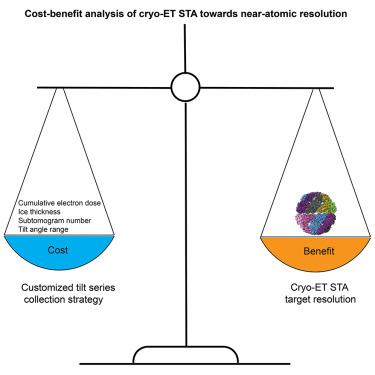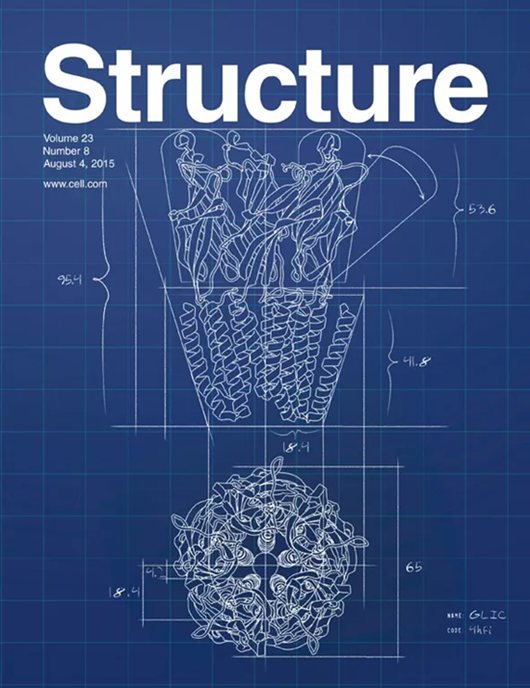Cost-benefit analysis of cryogenic electron tomography subtomogram averaging of chaperonin MmCpn at near atomic resolution
IF 4.3
2区 生物学
Q2 BIOCHEMISTRY & MOLECULAR BIOLOGY
引用次数: 0
Abstract
Cryogenic electron microscopy single particle analysis (cryoEM-SPA) has evolved into a routine approach for determining macromolecule structures to near-atomic resolution. Cryogenic electron tomography subtomogram averaging (cryoET-STA) toward a similar resolution, in contrast, is still under active development. Here, we use the archeal chaperonin MmCpn as a model macromolecule to quantitatively investigate the resolution limiting factors of cryoET-STA in terms of cumulative electron dose, ice thickness, subtomogram numbers, and tilt angle ranges. By delineating the feasibility and experimental factors of attaining near atomic resolution structure with cryoET-STA, especially the effect of electron damage through the tilt series and inelastic scattering at various ice thickness, we encourage a customized tilt series collection strategy for efficient throughput. This study provides a biophysical basis for the application of cryoET-STA (for highly symmetric molecules like MmCpn) toward high resolution and the rationales in using cryoET-STA to achieve an efficient outcome at the desired resolution.

近原子分辨率下伴侣蛋白MmCpn的低温电子断层亚断层平均的成本效益分析
低温电子显微镜单粒子分析(cryoEM-SPA)已经发展成为确定大分子结构的常规方法,达到近原子分辨率。低温电子断层亚层析成像平均(cryoET-STA)的分辨率相似,相比之下,仍在积极发展。本研究以原始伴侣蛋白MmCpn为模型大分子,从累积电子剂量、冰厚、亚层图数量和倾斜角度范围等方面定量研究了cryoET-STA的分辨率限制因素。通过描述利用cryoET-STA获得近原子分辨率结构的可行性和实验因素,特别是通过倾斜序列和不同冰厚下的非弹性散射产生的电子损伤的影响,我们鼓励定制倾斜序列收集策略以获得高效的吞吐量。本研究为cryoET-STA(用于MmCpn等高对称分子)向高分辨率的应用提供了生物物理基础,并为利用cryoET-STA在所需分辨率下获得高效结果提供了理论依据。
本文章由计算机程序翻译,如有差异,请以英文原文为准。
求助全文
约1分钟内获得全文
求助全文
来源期刊

Structure
生物-生化与分子生物学
CiteScore
8.90
自引率
1.80%
发文量
155
审稿时长
3-8 weeks
期刊介绍:
Structure aims to publish papers of exceptional interest in the field of structural biology. The journal strives to be essential reading for structural biologists, as well as biologists and biochemists that are interested in macromolecular structure and function. Structure strongly encourages the submission of manuscripts that present structural and molecular insights into biological function and mechanism. Other reports that address fundamental questions in structural biology, such as structure-based examinations of protein evolution, folding, and/or design, will also be considered. We will consider the application of any method, experimental or computational, at high or low resolution, to conduct structural investigations, as long as the method is appropriate for the biological, functional, and mechanistic question(s) being addressed. Likewise, reports describing single-molecule analysis of biological mechanisms are welcome.
In general, the editors encourage submission of experimental structural studies that are enriched by an analysis of structure-activity relationships and will not consider studies that solely report structural information unless the structure or analysis is of exceptional and broad interest. Studies reporting only homology models, de novo models, or molecular dynamics simulations are also discouraged unless the models are informed by or validated by novel experimental data; rationalization of a large body of existing experimental evidence and making testable predictions based on a model or simulation is often not considered sufficient.
 求助内容:
求助内容: 应助结果提醒方式:
应助结果提醒方式:


